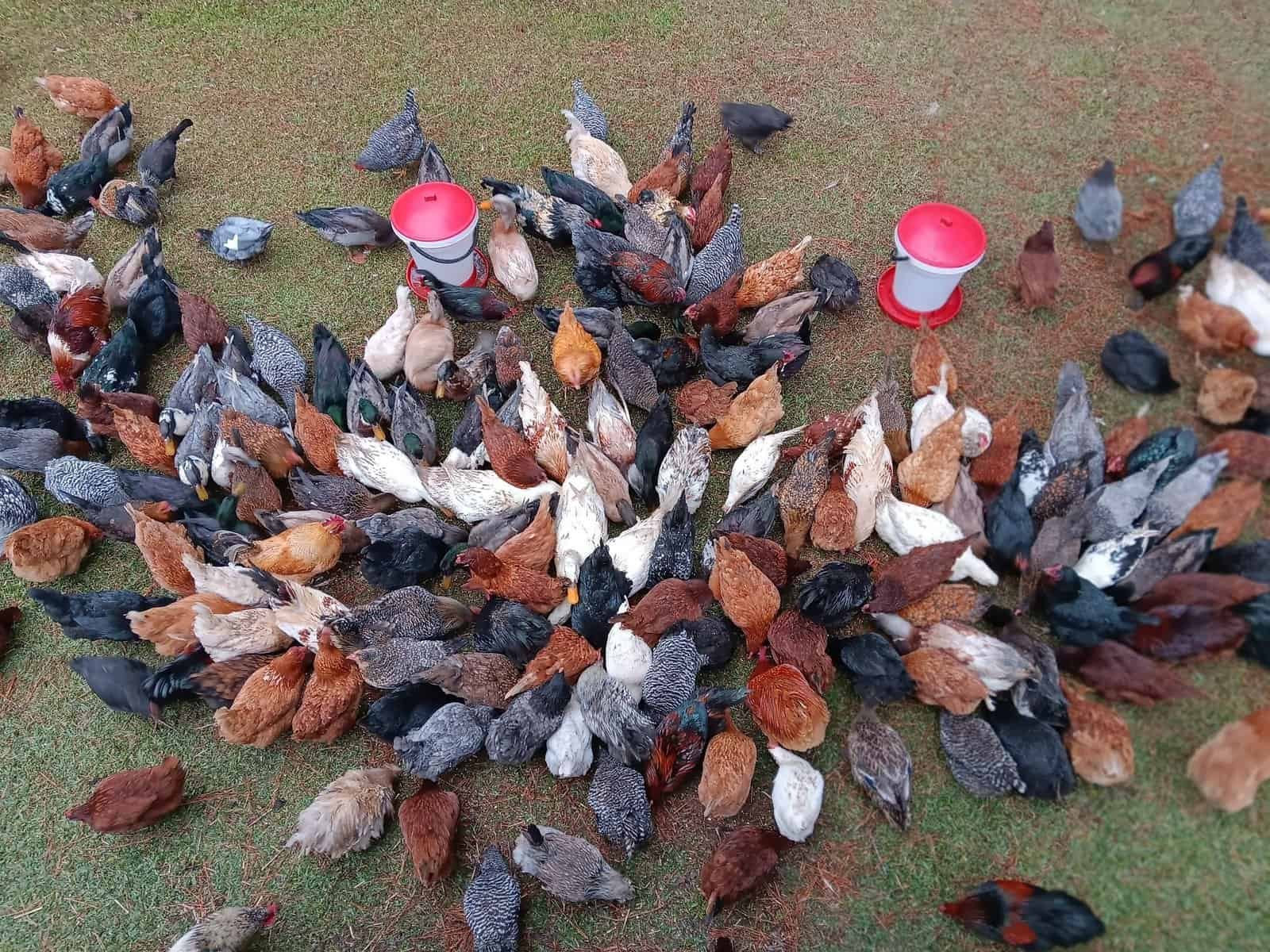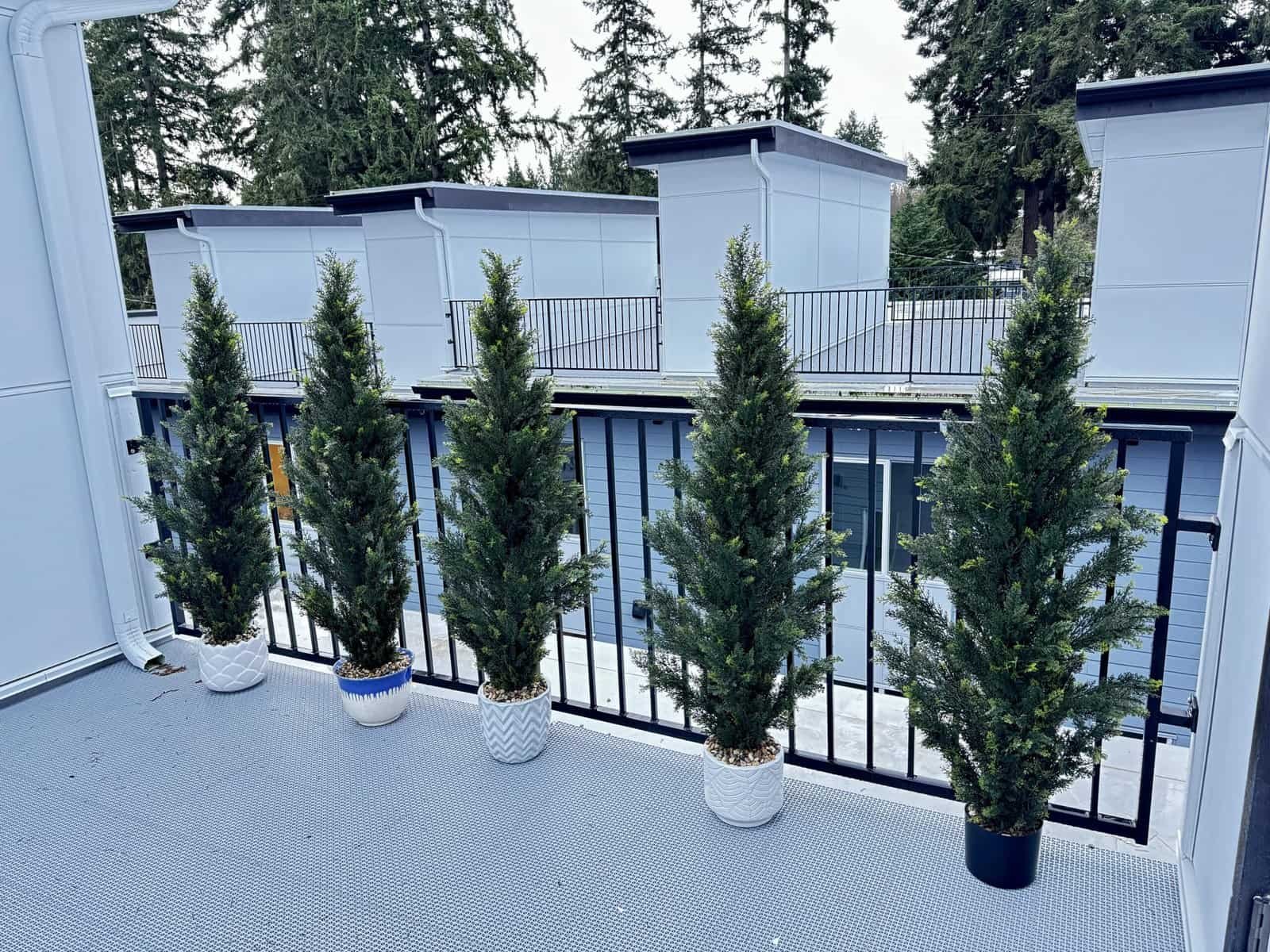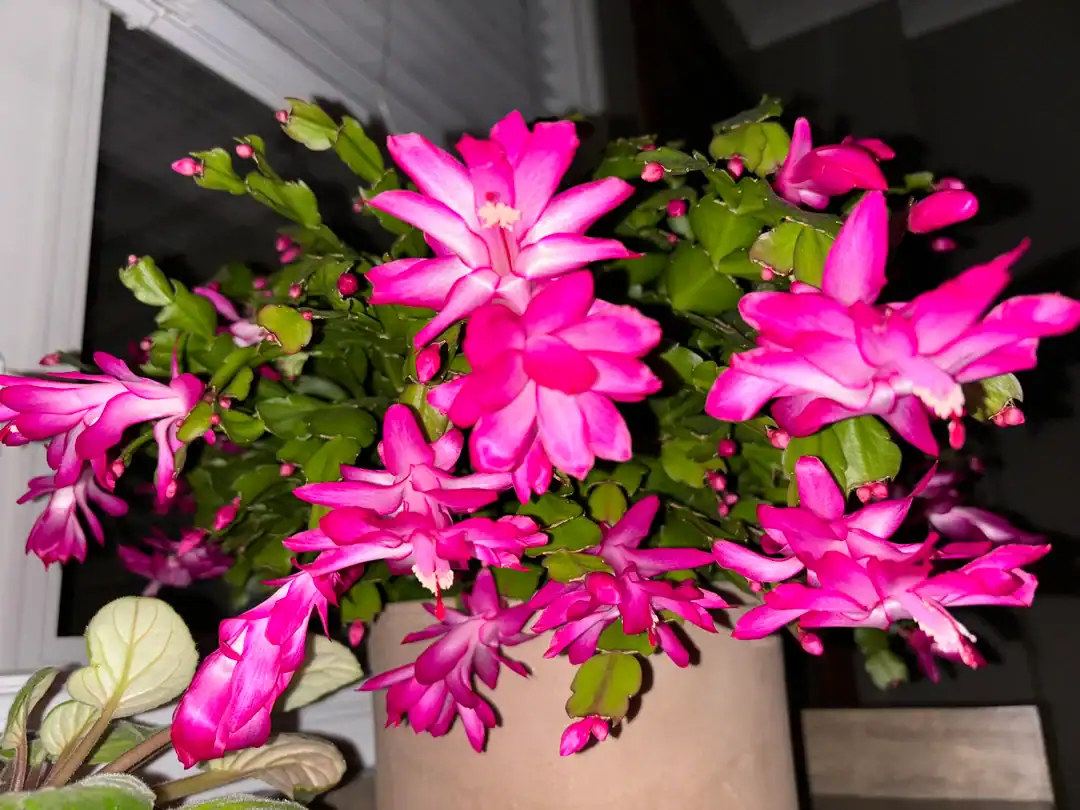Hello
Cutting back perennials in fall might feel like the right thing to do, but it can actually harm some plants. I learned that leaving certain plants standing through winter helps them stay strong and healthy.
Plus, it’s better for wildlife too. This post will share 15 perennials you should leave untouched for a thriving garden and happier creatures during winter. Let’s keep your plants safe!
Contents
- 1 15 Perennials You Should Never Cut Back In Fall
- 1.1 Coneflower (Echinacea)
- 1.2 Black-eyed Susan (Rudbeckia)
- 1.3 Coral Bells (Heuchera)
- 1.4 Russian Sage (Perovskia atriplicifolia)
- 1.5 Bee Balm (Monarda)
- 1.6 Garden Phlox (Phlox paniculata)
- 1.7 Bleeding Heart (Dicentra spectabilis)
- 1.8 Stonecrop (Sedum spp.)
- 1.9 Lavender (Lavandula)
- 1.10 Japanese Anemone (Anemone hupehensis)
- 1.11 Hellebore (Helleborus)
- 1.12 Cardinal Flower (Lobelia cardinalis)
- 1.13 Hardy Geranium (Geranium spp.)
- 1.14 Brunnera (Brunnera macrophylla)
- 1.15 Astilbe (Astilbe spp.)
- 2 Best Practices for Pruning Perennials
- 3 Conclusion
- 4 FAQs
- 4.1 1. Which perennials should I avoid cutting back in the fall?
- 4.2 2. Why shouldn’t I prune some perennial plants during fall gardening?
- 4.3 3. Can leaving perennials unpruned prevent powdery mildew?
- 4.4 4. What are examples of winter interest plants to keep intact?
- 4.5 5. How does avoiding fall pruning benefit my cottage garden?
- 4.6 6. Are there specific shrubs or bushes I shouldn’t cut back in autumn?
15 Perennials You Should Never Cut Back In Fall
Some plants are best left untouched in fall—they shine through winter or help wildlife thrive. These stunning perennials can keep your garden alive with beauty and purpose even as the seasons change.
Coneflower (Echinacea)

I leave my coneflowers standing through fall. The seed heads feed birds like finches during winter. They are also great for natural reseeding, adding more blooms without any extra work.
New plants pop up easily in spring!
These perennials handle cold weather well and look pretty even in the snow. Their tall stems add structure to the garden all season long. I mulch around their base to protect roots from freezing temperatures.
This simple step keeps them healthy and ready to thrive again next year!
Black-eyed Susan (Rudbeckia)

Black-eyed Susan, or Rudbeckia hirta, keeps my garden alive in winter. Its seed heads feed birds like finches during the cold months. The hollow stems also give shelter to pollinators and insects when temperatures drop.
I avoid pruning it in fall since those stems are so useful.
Deadheading flowers earlier in the season helps control self-seeding if that’s not what I want. But after blooming stops, cutting isn’t needed until early spring. These plants add beauty with their bright petals and offer practical benefits for wildlife too!
Coral Bells (Heuchera)

Coral Bells have semi-evergreen leaves that last through winter. These leaves protect the plant’s crown from cold weather. Cutting them in fall can hurt its health and growth.
I leave the foliage standing to insulate it and help new growth in spring. The colorful leaves also brighten my garden during the colder months. I wait until early spring to trim, once fresh growth begins to appear.
Russian Sage (Perovskia atriplicifolia)

Russian Sage thrives in zones 4 to 9 and shows off silvery stems with soft, feathery leaves. Its texture adds beauty during winter. I leave the plant standing through fall since pruning then can harm its crown.
Cold exposure or root rot might follow if it’s cut too soon.
I mulch around the base for insulation until spring arrives. Pruning works best in early spring when fresh shoots start growing again. This perennial doesn’t bloom on old wood, so waiting ensures healthy growth and beautiful blooms later on!
Bee Balm (Monarda)

Bee Balm has lovely blooms that attract bees, butterflies, and hummingbirds. The seed heads stay all winter, feeding birds and adding charm to the garden.
Cutting it in fall increases powdery mildew risk, especially in damp months. Stems also act as homes for helpful insects during cold weather. I always wait until spring to trim old growth for healthy plants.
Garden Phlox (Phlox paniculata)

Garden Phlox adds color from late spring to summer’s end. Its blooms are stunning, but the foliage often gets powdery mildew as it cools. I cut back infected leaves late in fall and disinfect my pruners after each use.
This keeps diseases from spreading.
I leave stems standing during winter for insulation. Birds like cardinals and goldfinches love eating the seed heads too! Early spring is when I remove leftover foliage. The old growth also helps insects find shelter through colder months.
Bleeding Heart (Dicentra spectabilis)


Bleeding Heart has heart-shaped flowers that catch the eye. Pollinators love these blooms, which thrive in USDA zones 3 to 9. The plant’s foliage dies back naturally in fall. This helps protect its crown from frost and keeps roots warm through winter.
I use it for borders or ground covers because it adds charm to shady spots. Its toxic parts mean keeping kids and pets away is a must. Dividing every 2–5 years keeps it healthy, but I prefer early spring or fall for that job.
Stonecrop (Sedum spp.)

Stonecrop thrives in dry soil and blooms beautifully during summer and early fall. Its thick stems and dried flower heads add charm to a winter garden. Pollinators love the late-season flowers, making it great for supporting bees.
The seed heads bring texture to autumn gardens, while the plant handles cold weather well. I cut mine back only in early spring before new growth starts. The bold colors and sturdy structure make stonecrop perfect for garden beds year-round!
Lavender (Lavandula)

Lavender adds beauty and a calming scent to any garden. Heavy fall pruning can hurt it, causing winter dieback or frost damage.
I only trim lavender lightly in early spring once new growth starts. Cutting too much in fall exposes roots and crowns, making the plant weak. Leaving its foliage helps keep my garden smelling great through winter! Lavender loves full sun and well-drained soil, so I make sure it’s planted in the right spot.
Japanese Anemone (Anemone hupehensis)

I love Japanese Anemones for their late-summer blooms. They can flower from mid-August until frost hits. Their flowers are small, about 2 to 3 inches wide, and come in white, pink, lavender, or purple shades.
These plants thrive best in humus-rich soil that drains well. Partial shade helps them grow beautifully.
Their leaves stay through winter and protect the roots. Cutting back too soon can harm these perennials. I wait until spring when new growth shows up to trim old stems away. Some varieties like “Fall in Love Sweetly” have stunning rose-pink flowers that brighten any garden space!
Hellebore (Helleborus)

Hellebores are tough, evergreen perennials. Their blooms appear in late winter or early spring. I let old leaves stay on the plant through fall. They protect flower buds from frost and keep the plant strong.
Some, like Helleborus x hybridus, have big colorful flowers that brighten a garden. For species like Helleborus niger, pruning waits until late fall or early winter. Wintergreen types such as H.
argutifolius get trimmed only after they bloom. Old leaves also help with photosynthesis, so I avoid cutting them too soon during fall gardening.
Cardinal Flower (Lobelia cardinalis)

Cardinal Flower stands out with bright red blooms. These flowers draw hummingbirds and butterflies to the garden. I love how they add bold color from late spring to early fall. They grow up to 3 feet tall in rich, moist soil that holds water well.
These perennials prefer shade or partially shaded spots. They thrive near ponds or in woodland areas where it’s damp. Native varieties help local pollinators thrive too. Though short-lived, they’re easy to propagate by seeds or dividing clumps.
Dry weather can harm them, so keeping the soil moist is key for their survival.
Hardy Geranium (Geranium spp.)

Hardy Geraniums, also called “cranesbills,” are perfect for sunny or partially shaded spots. They grow about 1–2 feet tall and thrive in USDA zones 3–8. My favorite is the “Geranium Rozanne” because it blooms for months and is so strong.
Their dark green leaves look lovely next to their small purple flowers. I never cut mine back in fall. The foliage helps protect the crown during winter. Plus, they add beauty and interest even when most plants fade away!
Brunnera (Brunnera macrophylla)

Brunnera macrophylla, or Siberian Bugloss, thrives in shaded areas. Its heart-shaped leaves bring texture and charm to gardens. I love how the small blue flowers add brightness in spring.
These plants spread slowly, perfect for shaded borders that need elegance.
The foliage stays through winter and protects the roots from cold. I leave the leaves until early spring to keep the crown safe. This plant does well in woodland-like gardens and pairs beautifully with other shade-loving perennials like coral bells or garden phlox.
Astilbe (Astilbe spp.)

Astilbe’s feathery plumes stand tall in winter gardens. They bring texture and interest during the cold months. I never cut mine back in fall because the foliage protects its roots from freezing.
It also adds a nice contrast to dried plants and evergreen shrubs.
In early spring, I remove the old growth to make space for fresh blooms. This keeps it healthy and pretty year after year. Astilbe loves moist soil and partial shade, so I give it just that.
It thrives in areas with cold winters, making it perfect for my garden care routine.
Best Practices for Pruning Perennials
Pruning at the right time can keep your plants strong and healthy. Some perennials need to stay untrimmed for winter protection and wildlife shelter.
Understanding plant care specific to seasons
I change how I care for plants based on the season. In fall, I leave perennials like coneflowers or black-eyed susans standing to protect their roots and crowns from frost. These act as “winter interest plants” too, adding beauty to a cold garden.
Some, like lavender or hellebores, keep their structure and shelter helpful insects during winter.
Spring-flowering perennials need special care since buds already form in fall. Cutting them at the wrong time removes these flower buds. For others like ornamental grasses or Russian sage, late winter works better for pruning because it keeps them safe through colder months while preventing issues like frost damage.
Sticking to seasonal plant needs keeps gardens healthy all year long!
Importance of leaving certain perennials standing to protect them
Some perennials need to stay unpruned in fall for their own good. Their stalks and seed heads act like a shield, guarding roots from harsh cold. Plants like coneflowers and black-eyed Susans keep their crowns safe this way.
Standing stems also trap snow, creating natural insulation. Even the dried foliage gives extra cover against freezing temperatures. This simple step can make these plants healthier when spring comes back around.
Providing habitat for birds and beneficial insects during winter
I leave seed heads on plants like coneflowers and black-eyed Susans. Birds enjoy the seeds during winter when food gets scarce. It feels good to know my garden helps them stay fed.
Stems and leaves also shelter insects from the cold. Butterflies, moths, and bees use this cover to survive. Watching wildlife in my yard makes fall gardening extra rewarding!
Conclusion
Leaving these 15 perennials standing in fall keeps your garden healthy and lively. They protect themselves from winter and help birds, insects, and other wildlife survive. Plus, they can surprise you with seeds or pops of color when it’s cold outside.
Make smart cuts only when needed to ensure strong growth next season! Your garden will thank you for it.
FAQs
1. Which perennials should I avoid cutting back in the fall?
You should leave plants like ornamental grasses, bee balm, black-eyed Susan, Russian sage, coral bells, and butterfly milkweed untouched. They add winter interest and help pollinators like monarch caterpillars thrive.
2. Why shouldn’t I prune some perennial plants during fall gardening?
Many flowering plants develop seed pods that feed birds or provide pollen for insects. Cutting them too early removes this benefit and can harm their growth cycle.
3. Can leaving perennials unpruned prevent powdery mildew?
Yes! Some herbaceous perennials resist diseases better when left alone until spring pruning because disturbing them increases the risk of spreading fungal spores.
4. What are examples of winter interest plants to keep intact?
Plants like panicum virgatum (switchgrass), echinacea purpurea (coneflower), lance-leaved coreopsis, and rose mallow stay beautiful through winter with their structure and seed heads.
5. How does avoiding fall pruning benefit my cottage garden?
By skipping fall pruning on certain hardy geraniums or stonecrops, you preserve their natural beauty while supporting bees and butterflies that rely on these floral resources for food.
6. Are there specific shrubs or bushes I shouldn’t cut back in autumn?
Yes! Avoid trimming rambling roses, syringa vulgaris (lilacs), mock orange shrubs, and rhododendron bushes since they set buds for next year’s blooms over the colder months.





